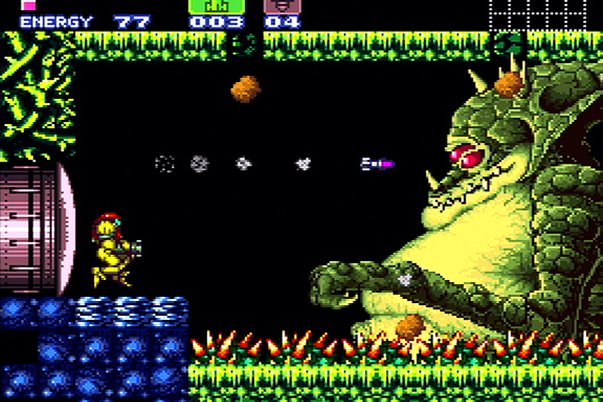The History of Metroid
A series that lived in the shadows of giants
After the release of Metroid II on the Game Boy it was all change for Gumpei Yokoi's R&D1. The team was split into two divisions; Intelligent Systems, responsible for handling console games, and another responsible for developing handheld titles.
Intelligent Systems was split up into even more development teams, one of which was formed by Metroid honcho Yoshio Sakamoto for a single purpose... planning a true Metroid sequel yet to be approved by Nintendo management, aimed squarely at the SNES.
The one shot group was named Team Shikamaru, and it held members from every other team inside R&D1 - it represented the very best talent they had. With Yokoi and R&D1 buried in endless Super Mario Land sequels Team Shikamaru continued its cause to create the Metroid Sakamoto had always dreamed of, and it'd turn out to be the biggest cartridge game ever made.
After the reasonable sales of the first two games it wasn't easy for Sakamoto to get the SNES Metroid off of the ground. Thanks to Nintendo's concerns over how well it would sell, the now-legendary instalment had its budget cut constantly and was almost cancelled three times due to the fact that, at the time, it was the biggest cartridge game ever made.
But just as the underdog series has been one for bad timing, it's also managed to defy all odds on more than one occasion. Sakamoto and his team managed to build a Metroid that didn't just surpass all expectations, but redefined 2D gaming completely.

From the moment the console powered on and moody red computer text sombrely announced "Metroid 3," the mood was back. Dead scientists littered the title screen, Samus's spared baby Metroid floating solo in a destroyed and corpse-littered lab.
In true Metroid fashion the pace - and tension - soon picked up and not but a few minutes into the game you encountered Ridley himself, before rushing to escape the self-destructing space station as it bellowed and exploded from within.
And just like the intro, Super Metroid did everything bigger; bigger story, bigger set-pieces, bigger bosses. The scramble to recover the galaxy's sole remaining Metroid - now in the hands of the dragon-like Ridley - took Samus back to the rebuilt pirate base of Zebes, with beautiful environments far beyond anything genre fans had seen.
Lava pits, jungle nightmares and underwater caves lay ahead in Samus' mission, and an updatable map, x-ray scans and tons of hidden areas took exploration to an entirely new level.
Suit upgrades included the Indiana Jones-style Grapple Beam, which allowed Samus to swing across chasms like a futuristic Tarzan, and new boots properly her through walls and obstructions at the speed of sound.
The game's non-linear design even gave birth to the fine tradition of speed running, as players competed to reach the end credits as quickly as possible by skipping areas or exploiting bugs.
Sign up to the GamesRadar+ Newsletter
Weekly digests, tales from the communities you love, and more


